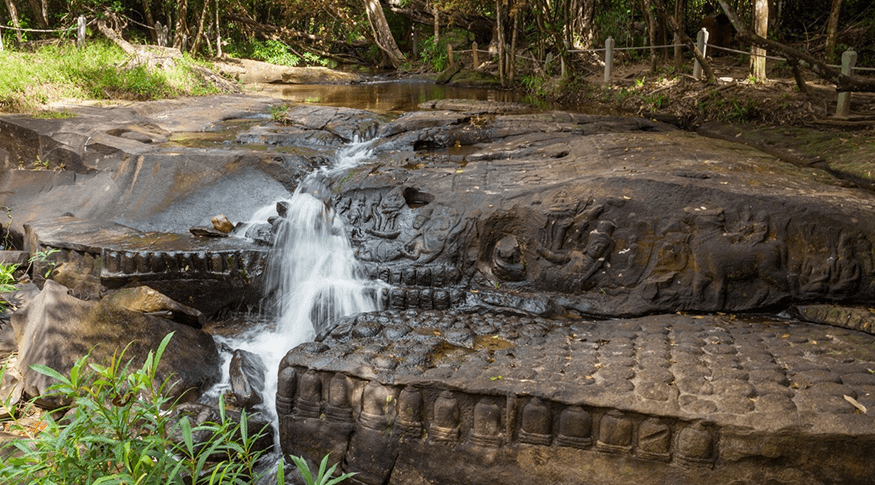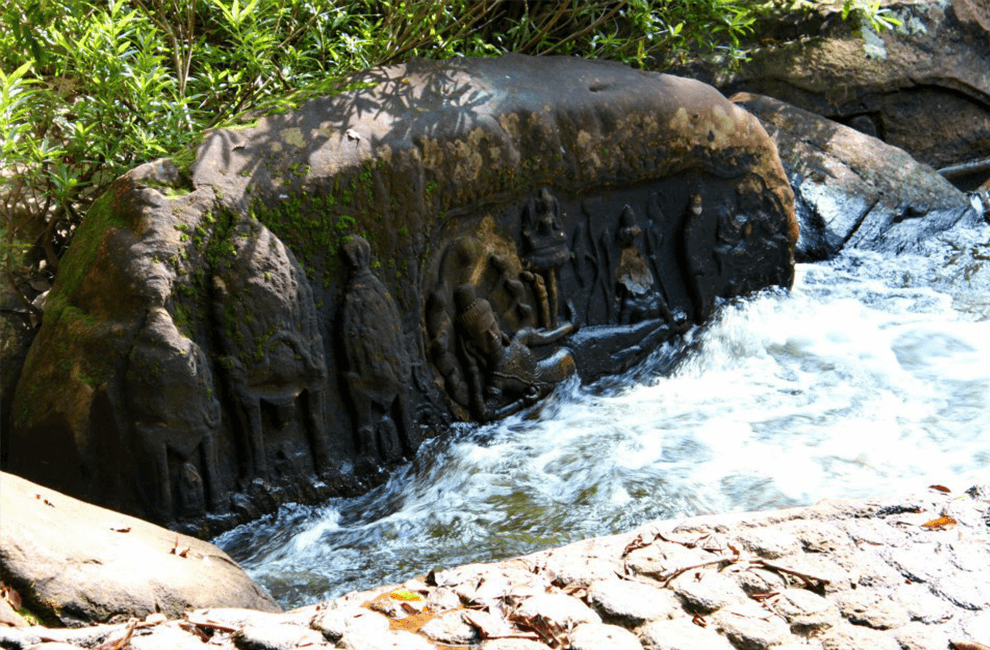Explore the hidden beauty of Cambodia as we take you on a journey to Kbal Spean, also known as the River of a thousand Lingas. Immerse yourself in the rich cultural and historical significance of this mystical site nestled deep within the lush jungles of the Phnom Kulen National Park.
Kbal Spean: Unveiling the Secrets
What are Lingas?
Before we delve into the wonders of Kbal Spean, let’s first understand the significance of Lingas. Lingas are representations of the Hindu god Shiva, symbolizing his divine power and energy. These sacred engravings are often found in rivers, signifying the connection between water and spirituality.
The Sacred River
Nestled in the heart of the Cambodian countryside, Kbal Spean is a mesmerizing site where the River gently cascades over rocks adorned with intricate carvings of Lingas. These carvings date back to the Angkor era (9th to 15th centuries) and showcase the masterful craftsmanship of ancient Khmer artisans.
A Spiritual Pilgrimage
Embarking on a journey to Kbal Spean is more than just a visit to a natural wonder. It is a pilgrimage, where spiritual seekers and history enthusiasts can immerse themselves in the sacredness of the site. The river’s gentle flow, accompanied by the tranquil sounds of nature, creates an atmosphere of serenity and introspection.

Exploring the Site
As you approach the river, be prepared to witness the marvel of nature enhanced by human artistry. Take a leisurely stroll along the riverbanks and marvel at the countless Lingas, representing the divine power flowing through the river’s clear waters.
Insights into Khmer Civilization
Kbal Spean offers a unique opportunity to gain insights into the ancient Khmer civilization. The intricate carvings depict various mythological scenes, including Hindu deities, celestial beings, and sacred animals. These engravings tell the stories of a bygone era, providing a window into Cambodia’s rich cultural heritage.
Experiencing Kbal Spean: Tips and Recommendations
When to Visit
To fully appreciate the beauty of Kbal Spean, plan your visit during the dry season (November to May). During this time, the water level is lower, making the carvings more visible. However, even during the rainy season, when the river is in full flow, Kbal Spean exudes a mystical charm of its own.
Respect for the Sacred
While exploring Kbal Spean, it is essential to maintain respect for its sacredness. Refrain from touching or damaging the carvings and refrain from swimming in the river. Cleanup initiatives have also been implemented to preserve the site’s natural beauty, so please dispose of any waste responsibly.
Trekking and Nature Trails
A visit to Kbal Spean can be combined with a trek through Phnom Kulen National Park. Explore the park’s lush jungles, hidden waterfalls, and diverse wildlife before reaching the sacred river. Experienced guides are available to ensure your safety and provide insightful knowledge about the area.
Getting There
Kbal Spean is approximately 50 kilometers northeast of Siem Reap. While public transportation options are limited, guided tours and private transportation are readily available from Siem Reap. Hiring a guide will enhance your experience by providing historical and cultural context.
Conclusion
A visit to Kbal Spean, the River of a thousand Lingas, is a captivating experience that transports you through time and offers a glimpse into Cambodia’s rich heritage. From the intricate carvings to the serene surroundings, every aspect of Kbal Spean is steeped in spirituality and cultural significance. Embark on this mystical journey and let the enchantment unfold before your eyes.





